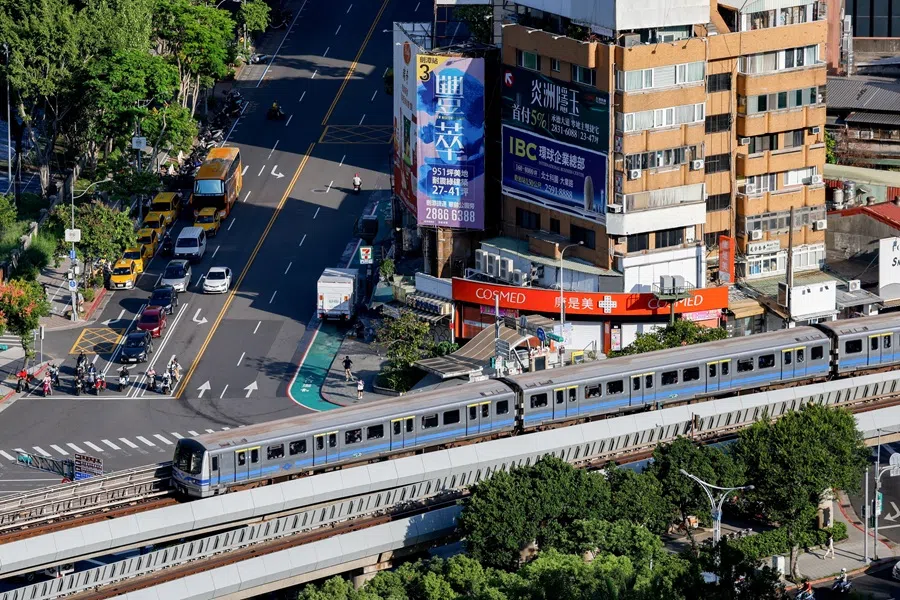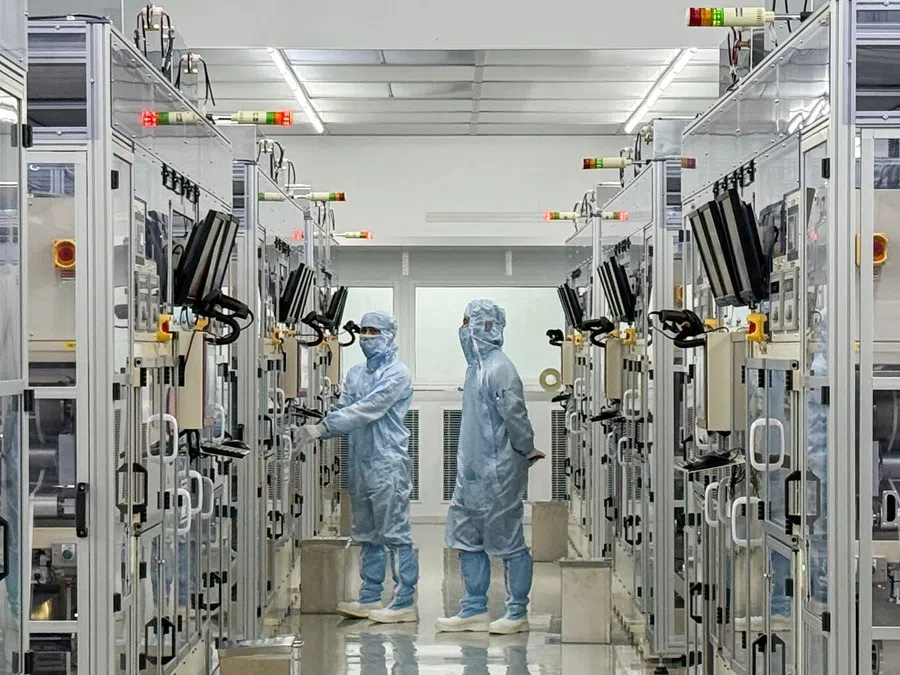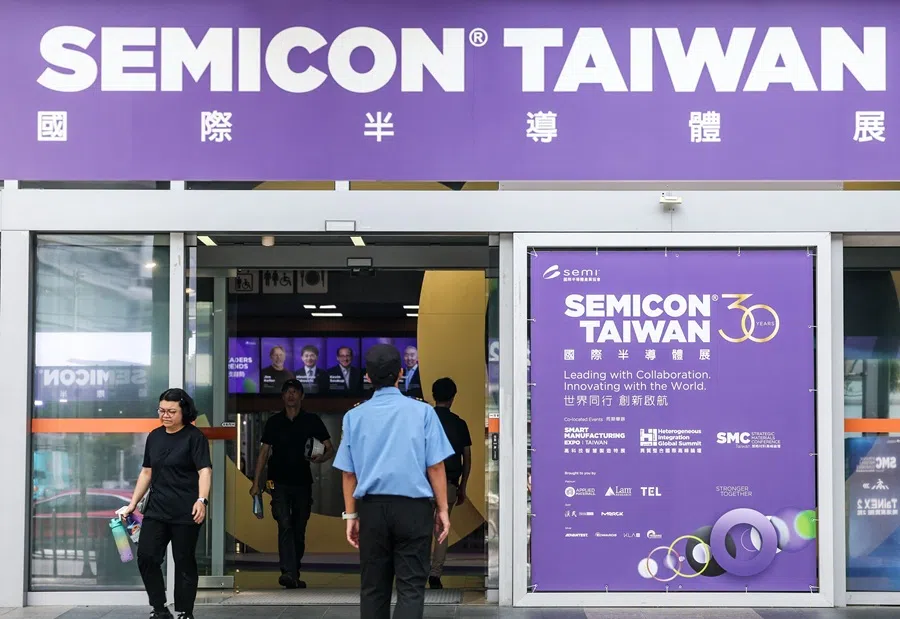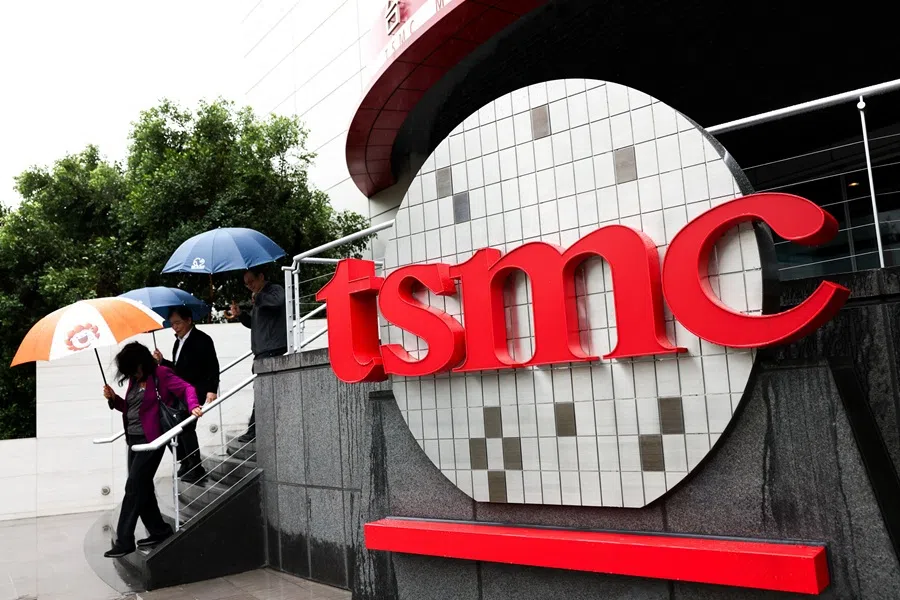How Taiwanese firms became the US’s secret weapon against China’s rise
Taiwanese firms have long been vital partners in the US economic strategy towards China. Their flexible operations and investments are reshaping supply chains and helping the US strengthen its manufacturing base while managing the challenges of China’s rise. Economist Min-Hua Chiang gives her read.

Taiwanese businesses have been significant contributors to the effectiveness of US policy towards the region over the last few decades. The successful export-oriented business helped build Taiwan into an economic fortress against Communist China’s expansion during the Cold War era.
Later on, they echoed the US policy of integrating China into the global economy through their massive investments in the mainland. Decades of accumulated manufacturing strength not only made them indispensable in the global supply chain network but also critical in empowering the US economic dominance in the face of China’s rise.
US-Taiwan: mutual economic gain
Positioned on the front line of the first island chain during the Cold War, Taiwan’s economic development was crucial to the US’s efforts to maintain peace and security in the region. The island’s post-war economic miracle — driven by robust entrepreneurship, export-oriented government policies, and access to the US market — strengthened its ability to fund its own military. As a result, Taiwan’s growing capacity to finance its defence budget significantly reduced America’s financial burden in supporting the island’s security.
Taiwanese firms’ close relationship with US multinational corporations (MNCs) played a key role in facilitating Taiwan’s economic development. Before China emerged as the world’s factory, Taiwanese businesses were among the main suppliers of low-cost consumer goods to the US, often under the brand names of American MNCs. By coordinating with other subsidiaries to source raw materials and distribute intermediate goods across the region, US MNCs also integrated Taiwanese companies into their broader production networks.
The US-Taiwan intimate business links did not benefit Taiwan’s economy alone. The well-established inter-firm relationships also helped the US regain its dominant position in global consumer electronics sales. By outsourcing component manufacturing and final product assembly to Taiwanese firms, American MNCs capitalised on their partners’ production flexibility at minimal cost.
... by controlling the key technology, the US ran a surplus in “charges of intellectual property” with Taiwan — between US$2 billion and US$5 billion every year from 2014 to 2024...

Relying on Taiwanese firms for product manufacturing on the mainland, the US MNCs also avoided costs associated with cultural conflict and non-regulatory entry barriers in China. More importantly, by controlling the key technology, the US ran a surplus in “charges of intellectual property” with Taiwan — between US$2 billion and US$5 billion every year from 2014 to 2024, according to the data from the Bureau of Economic Analysis.
US-Taiwan-China: the shifting triangle
For US foreign policymakers, Taiwanese firms’ large investments in China helped ensure that the mainland would follow East Asia’s export-oriented economic development model, supporting the US policy of integrating China into the global economy since the 1980s. Due to the uncontrollable “China fever” sparked by the US market opening to Chinese goods, the Taiwanese government had no choice but to relax investment restrictions on China in the 1990s.
Taiwanese businesses’ contribution to China’s exports is evident in their large share of Chinese exports. In 2020, for example, six out of ten top exporting companies in China were from Taiwan. Through their investment, Taiwanese firms successfully integrated China into the Taiwan-US industrial partnership — with the US as a key technology provider and consumer market, and Taiwan exporting key components to China for final assembly.
The close economic relations among the three countries have shifted following China’s pledge to upgrade its technological capabilities. US export control measures and additional tariffs on Chinese goods are aimed at pulling China back into the hierarchical production network that has existed for decades. In the ongoing battle to curb China’s rise and revive its own manufacturing industry, the US once again benefits from Taiwanese businesses’ renewed strategies, which align with the recent shift in US policy.
... China’s role in the global supply chain network could be impacted severely if the country is no longer within the US-Taiwan industrial partnership.

Taiwan’s exodus: China’s export slump?
First, China’s role in the global supply chain network could be impacted severely if the country is no longer within the US-Taiwan industrial partnership. The US’s higher tariffs on Chinese goods since President Donald Trump’s first term have accelerated Taiwanese firms’ relocation away from the mainland. Given Taiwanese firms’ substantial contribution to China’s exports, the declining investment from Taiwan signifies China’s fading role as the key export platform for the region.
The shift of the export platform away from China is obvious. China’s share in the US total imports of consumer goods dropped from 39% in 2018 to 27% in 2024, whereas the imports of consumer goods from the rest of the Asia-Pacific region increased from 21% to 27%, based on the statistics from the Bureau of Economic Analysis.
Apart from higher tariffs, the US ban on Taiwan selling advanced chips to China could weaken China’s ability to assemble high-tech products. Data from the World Bank shows that high technology products in China’s total manufactured exports dropped from 31% in 2020 to 27% in 2023. China’s exports of high technology products have decreased by US$171 billion from 2021 to 2024, according to the World Intellectual Property Organization.

In response, China has shifted its main export destinations to developing countries like Vietnam, moving away from the US in recent years. However, China’s exports to Vietnam may be impacted because the US-Vietnam trade deal imposes a 40% extra tariff on “transshipped goods”.
... the US has become Taiwan’s largest destination for outward foreign direct investment.
Strengthening US-Taiwan alliance
Second, Taiwanese businesses have aligned with US industrial policy by relocating manufacturing production to the US in recent years. As a result, the US has become Taiwan’s largest destination for outward foreign direct investment. Taiwan’s Ministry of Economic Affairs estimates that 21% of Taiwan’s outward foreign direct investment (OFDI) from 2020 to August 2025 went to the US, ahead of 19% to ASEAN countries and 15% to China.
Taiwan’s investment rise in the US is mainly attributed to its semiconductor industry’s OFDI. The most notable is TMSC’s US$165 billion investment in the US. TSMC’s investment, the largest in US history, is expected to contribute to the country’s expanding global share in advanced chip fabrication. According to the Semiconductor Industry Association, the US is expected to have 28% of the global advanced chip fabrication capacity (under 10nm) by 2032, up from 0% in 2022.
Apart from the investment shift, the trade statistics also reveal the transformation of Taiwan’s export reliance. The US has surpassed China and Hong Kong as Taiwan’s largest export destination in 2025 (January-August), accounting for nearly 30% of Taiwan’s total exports. In comparison, China and Hong Kong’s shares in Taiwan’s total exports dropped to 27%, from 44% in 2020, according to Taiwan’s Ministry of Finance.
... Taiwanese firms are unlikely to relocate factories back to China because of the even higher tariffs on Chinese goods entering the US.
Trump’s tariffs reshape global export landscape
While Taiwanese firms’ business redirection would smooth the US policy changes, a key question is whether or not Taiwan can take advantage of the evolving policy.
The higher tariff under Trump 2.0 could pose a challenge to Taiwan’s export sectors and economic growth, especially since Taiwan is shifting its export dependence from China to the US. However, Taiwanese products in the US market might not be less competitive globally, as extra levies are also imposed on other manufacturing economies.

Higher tariffs on Southeast Asian countries mean lower profit margins for Taiwanese firms manufacturing there. However, Taiwanese firms are unlikely to relocate factories back to China because of the even higher tariffs on Chinese goods entering the US.
Taiwan’s economic ties with the region may enter a new phase of development. Since most final consumer goods are destined for the US, countries less affected by higher tariffs are likely to become new export hubs for the region. Trade agreements between the US and these exporting countries will play a key role in shaping the future of the regional production network. The varying tariff rates imposed by the US on the region and globally are expected to become important factors influencing Taiwanese firms’ OFDI decisions.
In sum, the US foreign policy has benefited from Taiwanese firms’ flexible operations and nimble business tactics over the past few decades. Taiwanese investors’ recent moves indicate that they will continue to play a key role in the US effort to revive its manufacturing production at home and in the economic battle to downplay China’s influence on the global stage.
Decades of mutual trust between Taiwanese and American firms will encourage continued collaboration in developing new technologies and exploring business opportunities in the face of altered geopolitical settings. Foreign policy should support the US-Taiwan business partnership by promoting a genuine “reciprocal policy” that fosters the growth of both economies, ultimately contributing to the stability of the global economy in the future.





